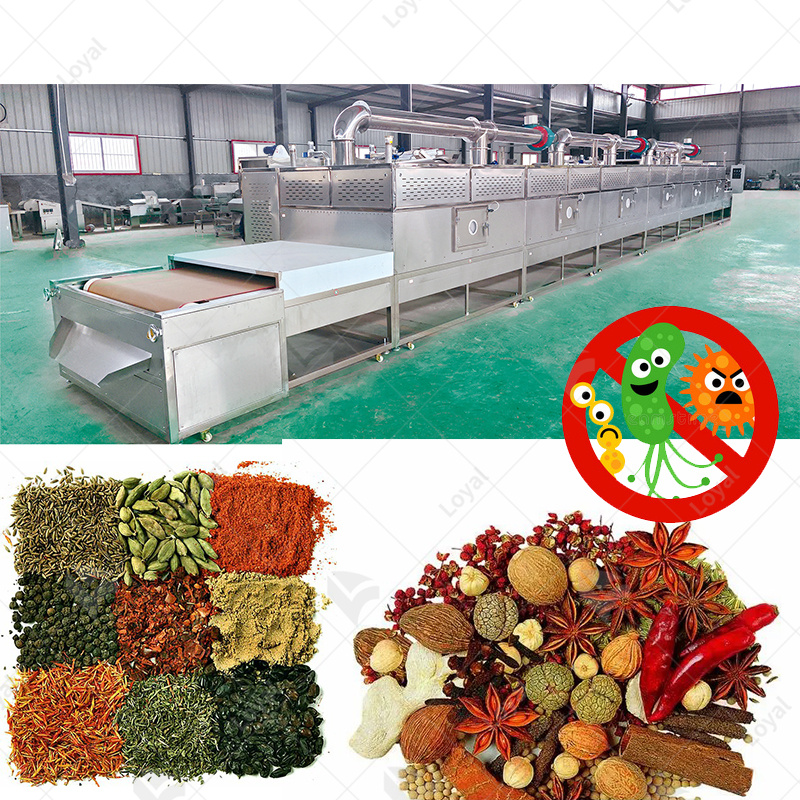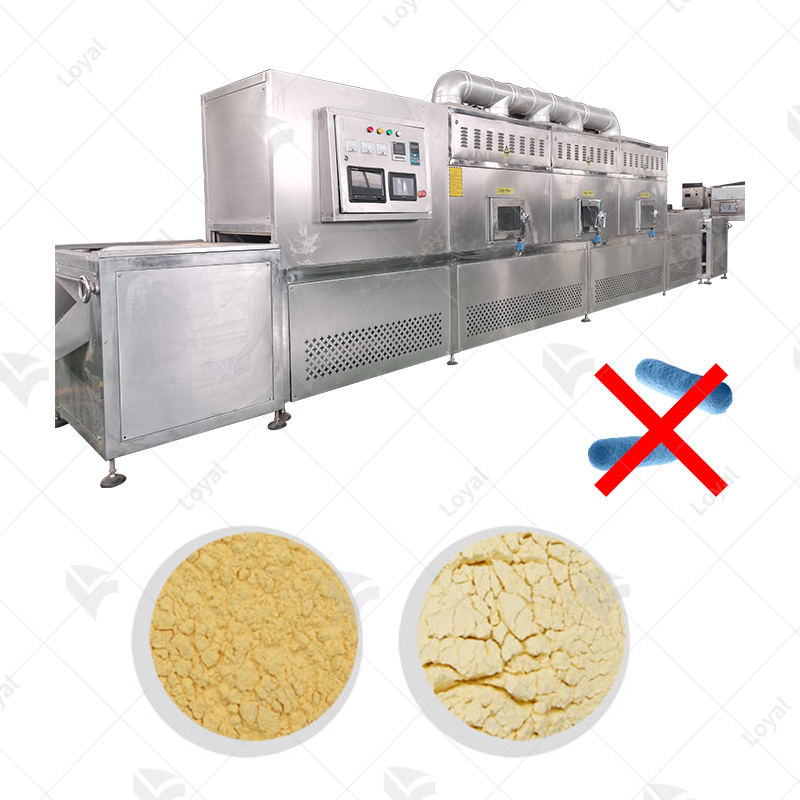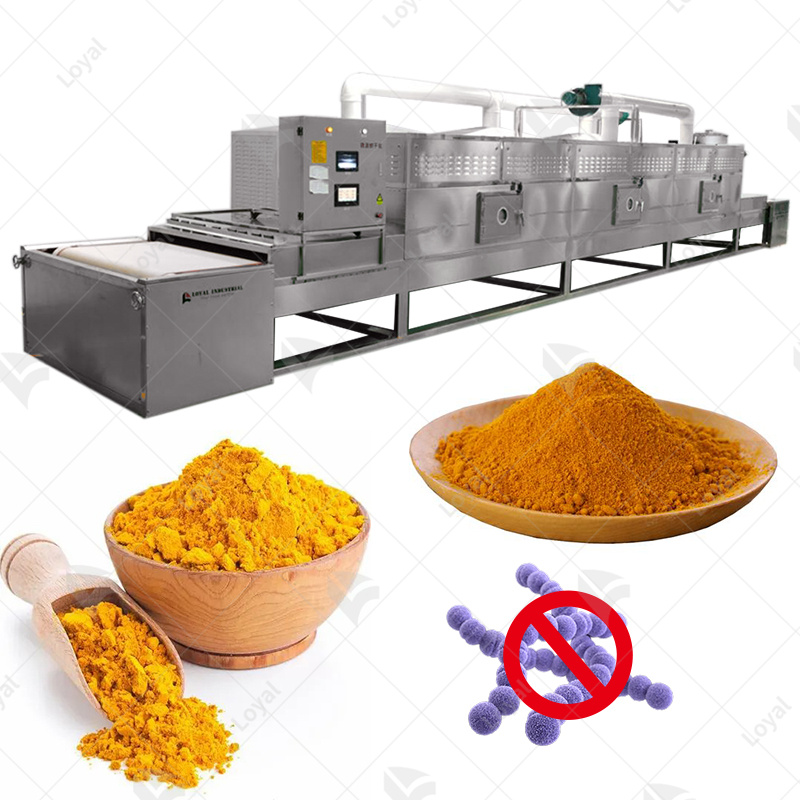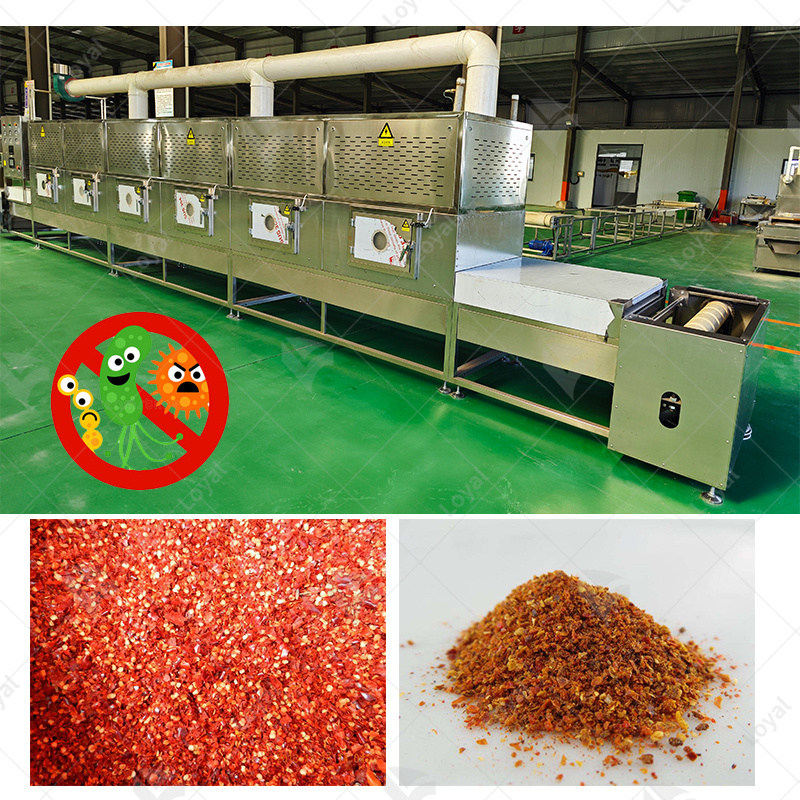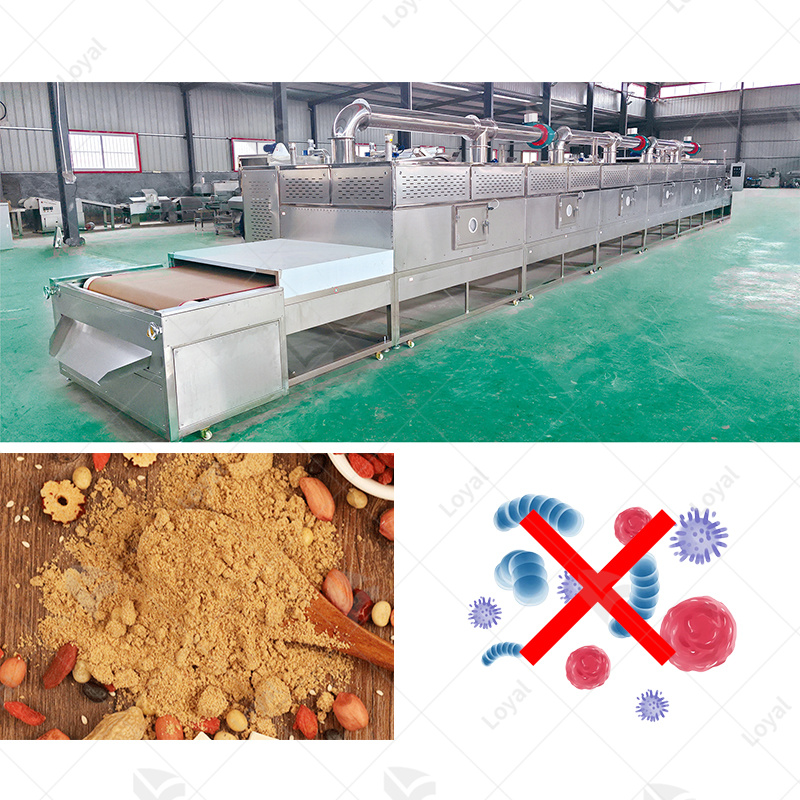When it comes to food processing, the latest advancement is microwave sterilization, which offers more advantages compared to traditional methods of sterilization. What this means is that electromagnetic waves are used by this technology to produce heat inside foods, hence eliminating pathogens, increasing shelf life, and maintaining nutrition as well as other sensory properties. The point here is that, instead of using traditional ways, which may take a long time at high temperatures, microwave sterilization applies the quicker method of even heating. This only mean that processing times will be reduced besides minimizing heat damage in the food. Throughout this paper, we will focus on the basic strategies for microwaving sterilization and its application in food field with its benefits and challenges likely to be encountered throughout its use. At last, you will have learned about how useful Microwave Sterilisation might be to enhance the safety and preservation of the quality of food products from these discussions above.
What is microwave sterilization and how does it work?
Microwave sterilization works using microwave energy, producing thermal and non-thermal effects in food. In particular, this innovation takes advantage of the capability of microwaves to penetrate through food matrices and generate heat using a dielectric heating mechanism, which allows polar molecules, particularly water, to absorb microwave radiation and oscillate at a high rate. Consequently, molecular friction leads to internal heat buildup, thereby raising the temperature enough for the destruction of pathogenic microorganisms as well as enzymes. Unlike traditional heating methods that transfer heat via the surface towards the inside, microwave sterilization results in bulk heating that ensures uniform temperature within the treated commodity. This method helps to reduce energy usage and processing time with minimum changes to food quality.
Fundamentals of microwave sterilization technology
This technology depends on how microwaves interact with components within foods. The central principle used here is dielectric heating, whereby polar molecules such as water interact with electric fields from microwaves while causing these molecules to vibrate, thus leading to molecular friction that heats up the food from within. Main technical parameters for this process are:
- Microwave Frequency: These include 915 MHz and 2450 MHz, which are commonly applied, depending on the particular penetration depth and level of uniformity required.
- Power Density: It is measured in watts per kilogram (W/kg) and determines how fast or slowly this needs to be done when must kill microbes thermally.
- Temperature and Time: Typical target temperatures are below or around 130°C, and exposure times vary from a few seconds to a few minutes depending on the types/ loads concerning microbial count and the nature of meal substrates.
- Moisture Content: Dielectric heating is more effective in materials containing adequate moisture because their water molecules respond more readily towards radiation due to their dipolar structure.
In this way, microwave sterilization can kill microbes while maintaining palatability and nutrition if followed under such guidelines. It is commonly used as precision control technology in food safety and shelf life elongation.
Contrasts between microwave and conventional sterilization strategies
Microwave sterilization and traditional sterilization methods differ in their mechanisms and effectiveness. The normal temperature for this is 121-134°C with processing times of 15-30 minutes using autoclaving among other methods. Heat enters the food from outside of the, which can result in longer processing time due to overcooking outer layer before the center attains desired temperatures.
On the other hand, microwave sterilization applies dielectric heating effect to allow quick volumetric heating. This permits faster attainment of target temperature such as 70°C – 130°C within seconds to several minutes of exposure. Key technical parameters include:
- Microwave Frequency: These can either be 915 MHz or 2450 MHz depending on penetration depth requirements and uniformity concerns.
- Power Density: Essential for suitable microbial killing measured in watts per kilogram (W/kg) by ensuring effective microbial kills.
- Moisture Content: More effective for these materials having a lot of moisture because water molecules respond better to microwaves directly due to its polarity.
In addition, due to shorter exposure time and lower processing temperature, sensory attributes and nutritional quality may still remain intact following microwave sterilization, unlike when using other means. Therefore, overall, microwave sterilization offers a more energy-efficient, time-saving, and environmentally friendly product alternative compared to conventional techniques.
Advantages of microwave sterilization systems.
Because of the efficiency in their operations and the ability to preserve products, microwave sterilization systems have a number of advantages over traditional methods. The rapid heating rates brought about by dielectric heating contribute towards shorter processing times thereby minimizing thermal degradation possibilities in food products. This means that attaining sterility temperatures is faster and, hence, better retention of flavor, color, texture, and nutritional profiles.
- Time Efficiency: Throughput increased due to acceleration of processing time into seconds or minutes thereby reducing labor charges.
- Temperature Control: Target temperatures are usually between 70°C to 130°C, which minimizes over-cooking risks associated with high temperatures found in other conventional methods.
- Microwave Frequency: Either 915 MHz or 2450 MHz will be chosen based on penetration depth and uniformity requirements for heating.
- Power Density: Uniform microbial inactivation without adversely affecting food quality becomes possible when controlled heating rates are maintained at watts per kilogram (W/kg).
- Energy Efficiency: Rapid heating rates result in lower overall energy consumption than conventional methods and minimized heat losses due to radiation.
- Moisture Content Utilization: Microwave energy absorption is enhanced resulting into low moisture content products thus enabling higher product concentration because it facilitates fast heating process
These parameters ensure that microwave sterilization meets the required microbial inactivation standards and optimally preserves the food’s quality and nutritional value, making it an attractive alternative for modern food processing applications.
How does microwave sterilization affect food products?
Microwave sterilization is mainly used to heat food and it does that more quickly than other methods. This results in minimal destruction of vitamins and antioxidants, which are heat sensitive, thus enhancing food nutritional quality. Furthermore, the rapidity of the process and evenness by which heating takes place helps retain attributes like color, flavor, and texture by reducing thermal degradation, as usually seen during conventional cooking. It also kills germs more effectively hence making food safe for human consumption while still retaining its overall quality and nutrient value.
Microwave impacts on food safety and quality
Foodborne diseases are reduced through microwave sterilization, which destroys pathogenic microorganisms, thus rendering them non-infectious. Dielectric heating during this process provides a focused effect on bacteria, viruses or pathogens other than what is obtained from these traditional modes. It has been observed that very fast heating maintains microbial safety but also reduces the cooking time, leading to minimal losses of heat-labile nutrients, whereas sensory characteristics such as taste, color, and consistency were preserved as much as possible due to decreased heat action upon records of culinary art standards. Consequently, microwave treatment can be considered a reliable way to ensure safe food without affecting its nutritive or organoleptic qualities.
The effect of microwave energy on food nutrients
Microwave technology advances have lately demonstrated how microwave energy affects different types of proteins in foods differently . Reliable scientific sources such as Health Line, the FDA website, and even Harvard Health Publishing suggest that depending on the minerals required for growth by body systems, microwave cooking may often conserve many vitamins at higher rates compared to other cooking means, although some nutrition could be lost too particularly when using this mode in comparison with other methods. For example, microwaving retains water-soluble vitamins like vitamin C because less time is taken in its preparation meaning that these essential nutrients absorb lesser amounts of heat from water.
In reality dielectric heating accounts for most energy transfer taking place inside microwaves where polar molecules exist within the electromagnetic field. The method employs frequencies within the range of 2.45 GHz, which guarantees efficient heat conduction and reduces the loss of nutrients through evaporation or hot spot formations typical for conventional cooking methods. Also, less water is used in microwave cooking reducing loss of water-soluble vitamins and minerals.
Nonetheless, it should be noted that nutrient retention varies depending on the food type and nutrient in question. Whereas proteins are generally relatively unaffected, some antioxidants may be prone to loss under certain circumstances. Minimizing water use and shortening the time taken to microwave can maximize nutrient preservation.
Microwave sterilization vs thermal sterilization
Both microwave sterilization and traditional thermal sterilization have the aim of killing microorganisms from food so as to make them safe for consumption but they differ in their principle and results. In this technology, microwaves with a frequency of about 2.45 GHZ cause oscillation among polar molecules like H2O inside food, resulting in heating across its bulk mass via dielectric heating, resulting in internal heating of material within a shorter time. This enables effective distribution of heat over large volumes leading to decrease in overall processing time significantly.
On the other hand, traditional thermal sterilisation involves conduction and convection methods to transfer heat from the external surface to the food’s internal regions. This technique is typically carried out at temperatures that range between 121°C -135°C over a specified period, usually for about 20-30 minutes, and it ensures that enough heat has been supplied so as to make sure that both surfaces of a given food are heated to eliminate pathogens. However, this method often takes longer processing time and can lead to nutrient loss due to high temperature treatment duration.
Technically speaking, specific parameters of microwave sterilization include power levels ranging from 500W to 1000W; exposure times of 2-10 min; target temperatures from approximately 80°C up to around 100° C. In comparison with thermal sterilization, this results in less time available for heating so that more nutrients that are very sensitive can be preserved. On the other hand conventional thermal sterilization generally involves pressures of about fifteen pounds per square inch (PSI) for reaching desired temperature-time combinations.
However, both methods effectively reduce microbial load, though their efficiency may vary depending on different factors such as the food matrix and initial microbial content. Microwave sterilization is usually faster and potentially more energy efficient, whereas traditional approaches have been scientifically accepted globally and have established protocols for numerous foods. The optimal method will be dictated by nutrient retention, energy usage, and processing time within particular applications.
What role does microwave heating play in food science?
In food science, microwave heating is a leading method for cooking, reheating and sterilizing food products. Primarily, the advantage of microwave heating lies in the speediness of heating, which significantly reduces processing time as compared to traditional methods. Moisture in foods is targeted by microwave that causes water molecules to shake inside, hence generating heat resulting in an even distribution of temperature. This technique proves more useful because it retains nutritional value of thermally sensitive foods and improves sensory attributes of meals through minimizing the loss of nutrients and maintenance of taste and texture. In addition to this, energy efficiency is realized with microwaves since they directly interact with the food system rather than warming up the surroundings which results in optimized energy consumption and less operational costs incurred in food production and preparation processes.
Mechanisms Involved In Microwave Heating During Sterilization Processes
Among sterilization methods employing microwave heating mechanisms, the dielectric heating method uses the interaction between microwaves and polar molecules within the food. Microwaves, when entering into a food, cause rapid oscillation (movement back and forth) of polar molecules like water. It is this rapid oscillation throughout the whole food brings effective sterilization. Several technical factors that include; microwave frequency, power density, temperature and exposure time dictate how well this process works.
- Microwave Frequency: 915 MHz or 2450 MHz are commonly used frequencies for industrial microwave sterilization.The choice of frequency impacts both penetration depth and uniformity of heating, with low frequencies providing deeper penetration.
- Power Density: Power density measured in watts per kilogram (W/kg) determines how much energy will be delivered to the food. Higher power densities result in faster rates but require precise control so as not to overheat leading to uniformity.
- Temperature: Effective sterilizations usually involve maintaining temperatures ranging from 60°C to 121°C, depending on the target microorganisms and the nature of the foods being processed.Accurate temperature control is essential for achieving microbial lethality and food quality.
- Exposure Time: Appropriate duration of microwave exposure must ensure complete sterilization. The amount of time for exposure should be determined based on the types of microorganisms present and the extent of sterility required.
These parameters should be meticulously optimized in order to achieve successful sterilization process with microbial safety being upheld while the food quality is preserved at the same time.
Microwave-Based Thermal Sterilization Techniques
Microwave-Assisted Thermal Sterilization (MATS) combines microwave heating with traditional methods of heat treatment to improve efficiency and effectiveness of food sterilization. This technique involves rapid heating of food products under pressure, which leads to uniform temperature distribution and decreased process times.
- Penetration Depth: MATS employs specific microwave frequencies (usually 915 MHz or 2450 MHz) that ensure deeper penetration into food matrices than conventional thermal methods do. Lower frequencies like 915 MHz are preferred for their better ability to efficiently penetrate larger food items.
- Power Control: In MATS, power density must be precisely controlled. The power densities range from 1-5 W/kg in most cases. This is to ensure that heating is enough attain desired temperature without compromising quality of product through its overheating.
- Temperature Range: It usually operates within a temperature range between 90°C and 121°C.This range has been chosen to target pathogenic microorganisms and inactivate them while maintaining the visual and nutritional qualities inherent in the foods, hence necessitating accurate monitoring systems.
- Time Efficiency: MATS has shorter exposure time compared to traditional ways, ranging from 2 to 20 minutes depending on the kind of food and load of microbe. This high-speed processing conserves energy and reduces thermal damage to maintain food quality.
- Pressure: The use of pressurized environment (typical range is about 1-3 bars) in combination with microwave heating helps to raise boiling point of water within the product ensuring thorough sterilization faster.
Moreover, several studies have supported these parameters. As a result, uniform heating and efficient microbial inactivation with the combined use of microwave and thermal energy are economical in terms of energy while preserving the food’s sensory attributes and nutritional value.
Food industry research and development
An overview of some recent research and developments in the food industry reveals several emerging technologies and trends. One noteworthy advancement is predictive analytics for food safety that applies Artificial Intelligence (AI) or Machine Learning (ML). To predict potential contamination, AI algorithms have been used to optimize supply chains, leading to reduced cases of foodborne illnesses caused by contaminated foods after predicting any possible contamination or help reduce wastage. Secondly, upcycling food waste towards high-value ingredients is another notable accomplishment. They are using biochemical processes alongside fermentation technology to convert byproducts into nutritious and sustainable foods, hence reducing environmental pollution. In addition, companies are increasingly focusing on plant-based proteins due to changing consumer preferences towards more sustainable diets for health reasons. Better formulations as well as new extraction methods are being experimented with that could improve taste, making them more appealing, plus enhancing texture and nutrition content for this rapid growth sector.
How does microwave pasteurization differ from microwave sterilization?
Even though microwave pasteurization and microwave sterilization both involve using microwaves as the source of energy, there are specific differences with regard to their process parameters and objectives. Mainly for few minutes, microwave pasteurization involves heating food to a temperature between 60°C and 90°C mainly intended to eliminate pathogens and reduce spoilage organisms that cause deterioration of the shelf life without changing the sensory characteristics of the product significantly. On the other hand, Microwave sterilization is the process that entails subjecting the food to temperatures above 100°C for a specific duration, thereby destroying both non-pathogenic and pathogenic microorganisms, including bacterial spores, to achieve commercial sterility. Therefore, these products can be kept at room temperatures for long periods of time. However, it should be noted that sterilized foods are often subjected to higher temperatures as well as longer processing times than in pasteurized ones.
Understanding microwave pasteurization
Microwave pasteurization is a thermal process whereby microwave energy is used to heat up food from low-temperature levels (usually around 60-90°C) up to moderate degrees within a very short period (few minutes). This kills any harmful organism in it, thus extending its shelf-life by reducing the microbial population responsible for producing spoilage through decay. It is important to note that one of the advantageous features of this method of microbial reduction is that it does not have a significant impact on various sensory properties such as taste, texture, or nutritional contents involved in microwaving compared to traditional types such as boiling or baking hence, saved time used during cooking because they directly heat meals.
Comparing pasteurization and microwave sterilization processes
Essentially when comparing pasteurization against microwave sterilization processes including some technical parameters related with food safety and quality are crucial considerations. Pasteurisation normally operates at a temperature range of 60 -90oC over a short period enough to kill the majority of pathogenic microorganisms and reduce spoilage organisms. The aim here is to extend the shelf life of the food while keeping sensory qualities like taste, texture, and nutritional content intact. Conversely, microwave sterilization works by raising the temperatures of foods above 100°C for a defined period necessary for achieving commercial sterility by killing all forms of microorganisms, including bacterial spores. This makes it possible for products that have undergone sterilization to be stored at room temperature for extended periods unlike those subjected to pasteurization.
Technically, pasteurization processes often maintain temperatures around 72°C for 15 seconds (High-temperature short-time; HTST) or 63°C for 30 minutes (Low-temperature long-time; LTLT). On the other hand, microwave sterilization can reach up to 121oC in a range of two-four minutes which ensures that heat-resistant spores are deactivated thus a major parameter required when producing products capable of storing at room temperature.
The primary trade-offs between these two processes revolve around their impact on food quality and energy efficiency. Pasteurized products usually have fewer alterations in terms of sensory attributes and nutrition, making them less energy-consuming. In contrast, microwave sterilization entails high energy consumption, possibly altering sensory properties but having a longer shelf life without refrigeration. These methods, however, serve different purposes based on the nature of the food product and desired shelf stability/safety standards.
Applications in food processing: pasteurization vs microwave sterilization
Pasteurization is a process that is commonly used in the dairy industry. It is mainly done to guarantee the safety of milk and other dairy products by killing pathogenic microorganisms such as Listeria, Salmonella and E. coli. HTST and LTLT are the standard methods that are most suitable for this purpose. While HTST heats milk up to 72°C for 15 seconds, LTLT involves heating at 63°C for 30 minutes. These processes help maintain dairy products’ sensory and nutritional properties, thus a shelf life of about 2-3 weeks under refrigeration.
On the other hand, microwave sterilization is used where longer shelf life is required such as ready-to-eat meals and shelf-stable packaged foods. This method applies heat to foods at around 121°C within a range of time between two to four minutes, thereby effectively destroying heat-resistant bacterial spores. The principal technical parameter here includes the evenness of heat distribution, which helps achieve commercial sterility. With a high temperature but short-duration approach, the microwave technique can increase the food preservation period by up to several months without refrigeration, irrespective of changes in texture or flavor.
However, both these techniques have some benefits over one another depending on particular needs posed during food manufacturing process selection criteria applied therein. Pasteurization is preferred when natural taste and nutrition content retention are important with the possibility of storing such items in coolers at low temperatures, while microwave sterilization comes into play when there’s an urgent need for long-term storage under normal circumstances without any cooling provisions.
How has the history of microwave sterilization evolved?
The history of microwave sterilization has evolved a lot since its inception. Initially researched in the 1940s and 1950s, microwave technology was mainly concerned with rapid cooking and heating. Sterilization started to gain momentum in the following decades, motivated by the need for better ways to increase the shelf life of various foods. Improvement in temperature control and heating patterns of microwaves in the 1970s and 1980s paved the way for the development of commercial-sized sterilization systems. With continuing advances and an enhanced understanding of electromagnetic waves, modern methods have overcome these disadvantages, leading to uniform washing heat distribution and making it a feasible alternative for large-scale food processing operations. Microwave sterilization is known today as an efficient method that retains food quality, thereby making it important in the food industry. The efficiency of microwave sterilization techniques makes them invaluable tools within the food industry for maintaining product quality.
Review on the history of microwave sterilization technology
Mid 20th century was when microwave sterilization technology was invented, and it evolved from the initial use of microwave energy for rapid heating and cooking. This technology attracted researchers’ attention in 1960s for its usage in sterilizing foods. By the 1980s, improved microwave engineering had enhanced the control of heating patterns and temperatures necessary for developing effective methods of sterilization. In recent years, technological advancements have led to higher uniformity and consistency in heat distribution; hence, making commercial food processing through microwave sterilization is possible. The technique has now gained a reputation as an extended shelf-life enhancer that retains food quality and nutritional value.
Milestones in the development of microwave sterilization systems
1960s – Initial Research and Development:
Early explorations attempted to exploit microwave energy for quick food warming and cooking. They discovered that microwaves could penetrate food and achieve the volumetric heating necessary for sterilization. Microwave frequencies of about 2.45 GHz were the main technical parameters of this period, which set the standards for microwave ovens and the first attempts at sterilization.
1980s – Advancements in Microwave Engineering:
The 80s was marked by notable achievements in controlling microwave energy distribution. Better generators as well as applicators have been developed by scientists, hence improving temperature control and heating patterns. These improvements helped to achieve reliable and homogeneous heat distribution necessary for effective sterilization. Among these were power output (usually between 500-1000 watts) applicable for home use but may be scaled up to higher outputs for industrial applications.
1990s – Commercial Application and Optimization:
The first commercial applications of microwave sterilization occurred in the 90’s because the process had become more reliable through technological refinement. Significant developments included the inclusion of advanced sensors and control systems to provide real-time monitoring as well as adjustment of the heating process. To ensure uniformity and safety of microwaved-sterilized products, guidelines were set by industry standards bodies. So during those days, some technical parameters such as temperature thresholds (above 121°C) and exposure times (approximately from two to three minutes leading to the resultative effect) were standardized.
Future trends and technologies in microwave processing
The future of microwave processing is expected to be dynamic, confusing, and full of synonyms. For example, it might involve several trends that are at the cutting edge of technology and can be used to improve efficiency, accuracy as well as suitability in different industries. One leading trend is the combination of microwave systems with Internet of Things (IoT) and intelligent technologies. This involves embedding IoT into microwaving equipment so as to achieve real-time monitoring and control, making possible optimal energy consumption, accurate heating patterns for better cooking experience and predictive maintenance.
Microwave processing is also expected to witness a revolution due to breakthroughs in materials science. Novel dielectric materials with specific properties can be developed to enhance microwave absorption and transmission efficiencies thereby optimizing warming processes. For instance, using metamaterials could lead to improved control over wave propagation, including field distribution, hence more homogeneous heating patterns.
Further, there is an increasing demand for hybrid systems that combine microwaves with other forms of energy, like infrared or radio frequency heating. Such hybrid systems may offer additional advantages, such as superior penetration depths or even temperature profiles across the sample being sterilized.
Future system designs are likely going to exhibit enhanced sensor arrays that deliver higher resolution data on key variables such as temperature, moisture content, and dielectric properties, among others. The data feeds these sensors will train machine learning algorithms about process parameters, which should always remain dynamic, thus ensuring proper continuity without failures, however slight they might seem. The industrial applications of these advanced systems may have power outputs ranging from 1000-3000 watts while temperature limits can exceed 150℃ for certain materials and processes. This includes time frames, which could be set within seconds rather than minutes for particular applications, so fast responses would guarantee success during the process.
As shown by this article, the coming years will see more flexible, efficient and fail-safe micro-wave ovens resulting from better use of internet connectivity via improved sensing techniques plus innovative material selection options combined with a mix of heating methods.
Frequently Asked Questions (FAQs)
Q: What is microwave sterilization?
A: Microwave sterilization is a method used to sterilize food by using microwave power to generate heat, effectively killing microorganisms. This technology is a part of food engineering advancements and provides an alternative to conventional retort methods.
Q: How does microwave assisted thermal sterilization differ from conventional methods?
A: Microwave assisted thermal sterilization differs from conventional methods such as conventional retort by using electromagnetic waves (microwaves) to quickly and evenly heat the food, resulting in reduced sterilization time and potentially better retention of food quality. Traditional methods rely on conduction and convection, which can be slower and less uniform.
Q: What are the benefits of using microwave systems in food sterilization?
A: The benefits of using microwave systems in food sterilization include faster processing times, energy efficiency, improved heating performance of microwave ovens, and potentially better preservation of the nutritional and sensory characteristics of the food.
Q: What types of foods can be processed using microwave technology?
A: Microwave technology can be applied to a variety of food types, including model food products developed for experimental purposes, commercial microwave food packages, and new food items being introduced by food companies.
Q: How have advancements in microwave technology impacted food processing?
A: Advancements in microwave technology, such as continuous microwave systems and the development of single-mode microwave applications, have significantly impacted food processing by offering more consistent and rapid heating methods, which can improve the overall quality and safety of sterilized products.
Q: Are there any drawbacks or challenges associated with microwave sterilization?
A: While microwave sterilization offers numerous benefits, challenges include ensuring uniform heating throughout the food product, managing the thermal characteristics of microwave resonance-induced energy, and developing microwave systems that can handle large-scale commercial operations. Additionally, extensive testing and review on history and effects of microwave processing are necessary to ensure successful implementation.
Q: How is microwave power measured and controlled in food processing?
A: Microwave power in food processing is typically measured in megahertz (MHz) or gigahertz (GHz), and it is controlled using sophisticated microwave systems that can adjust the power levels to ensure optimal heating performance and effective sterilization of food without compromising quality.
Q: What is the future outlook for microwave sterilization in the food industry?
A: The future outlook for microwave sterilization in the food industry is promising, with continuous advancements in technology and a growing interest from food companies in adopting novel food processing methods. Ongoing research in food sci and engineering aims to further optimize microwave assisted thermal pasteurization and sterilization techniques, making them more efficient and widely accepted.













